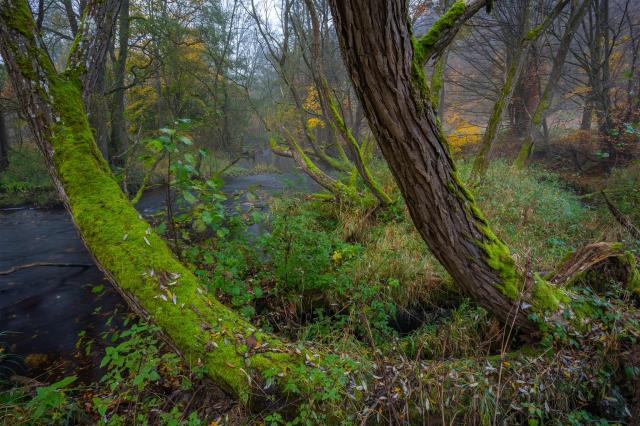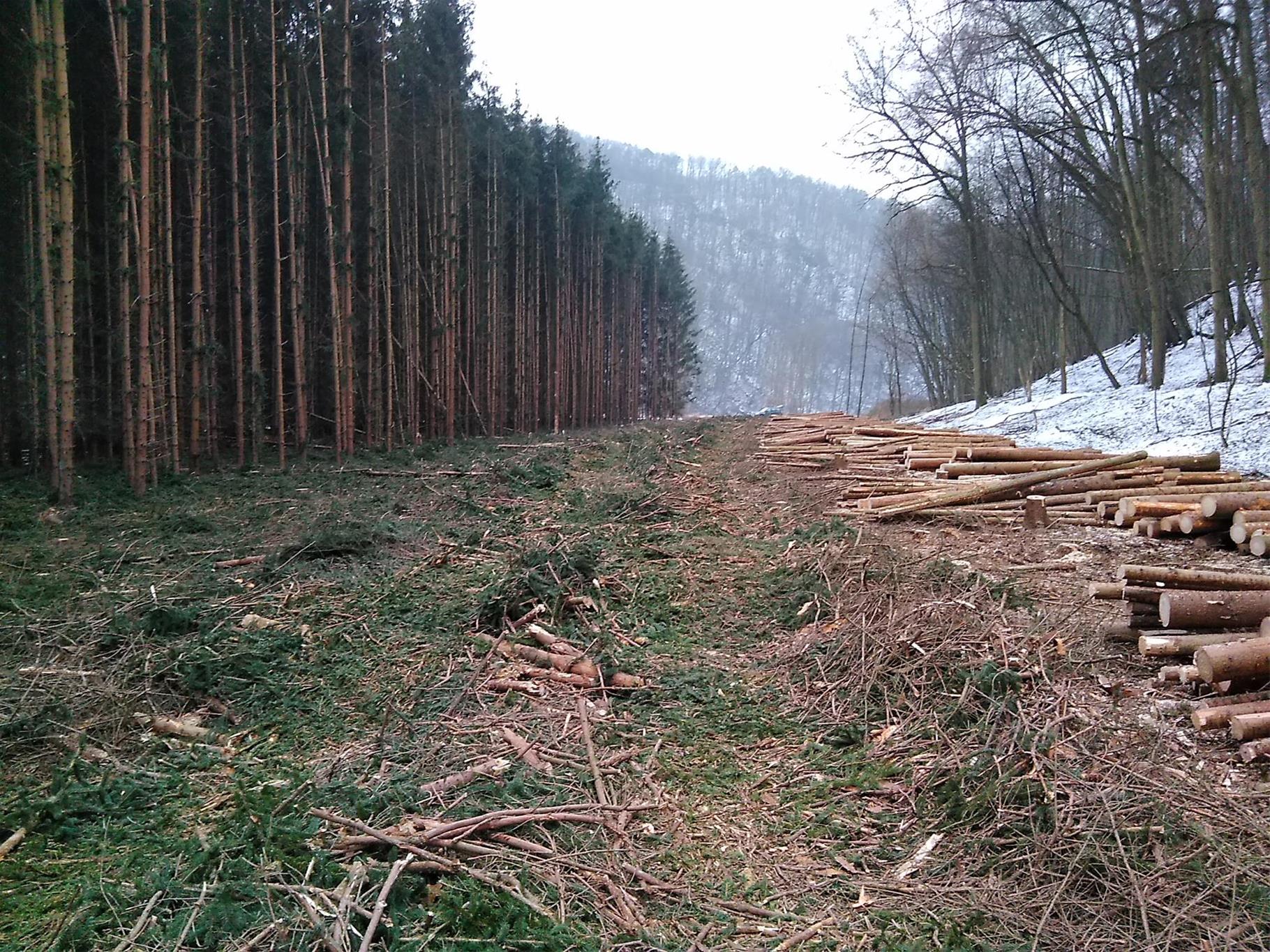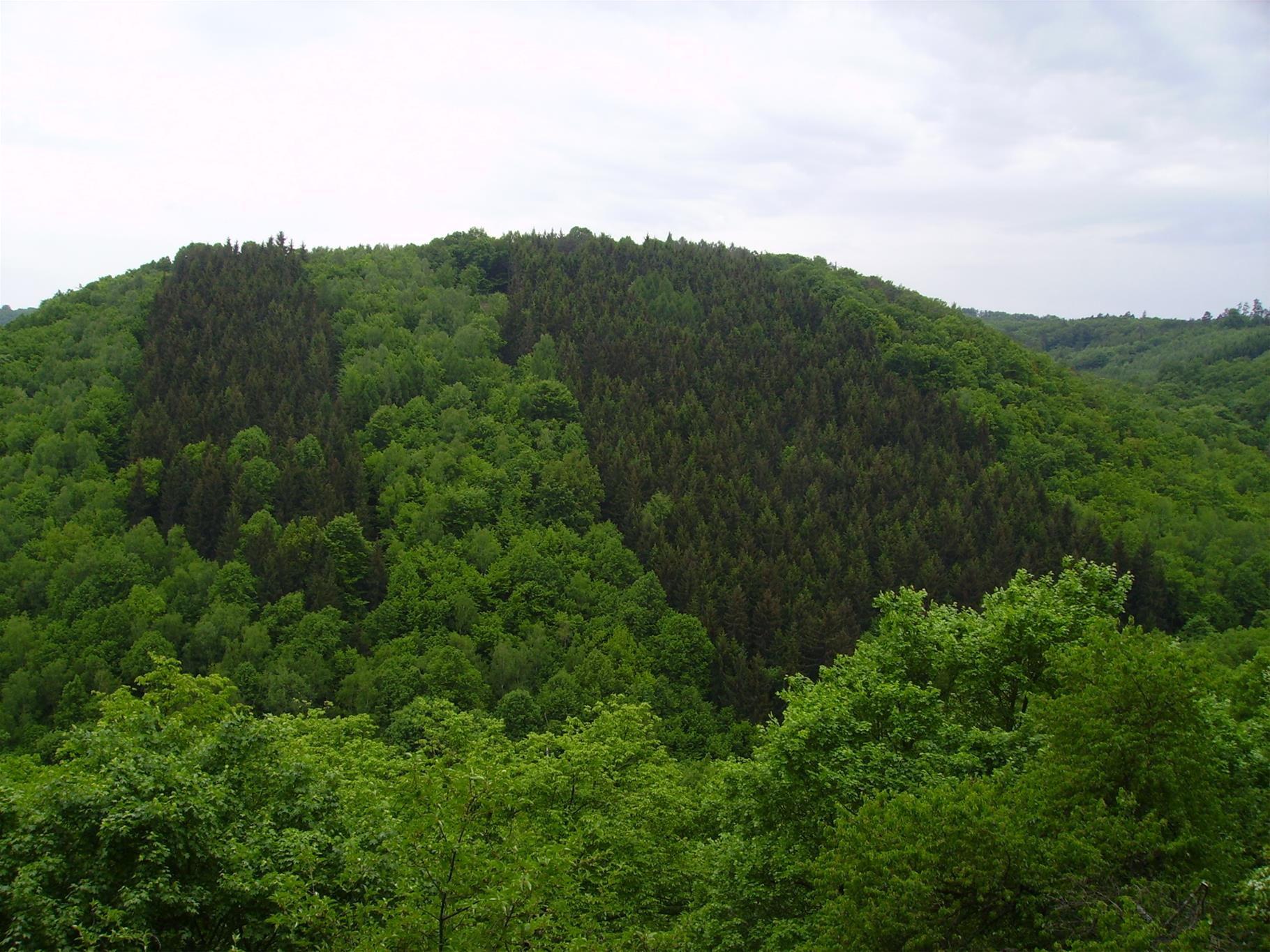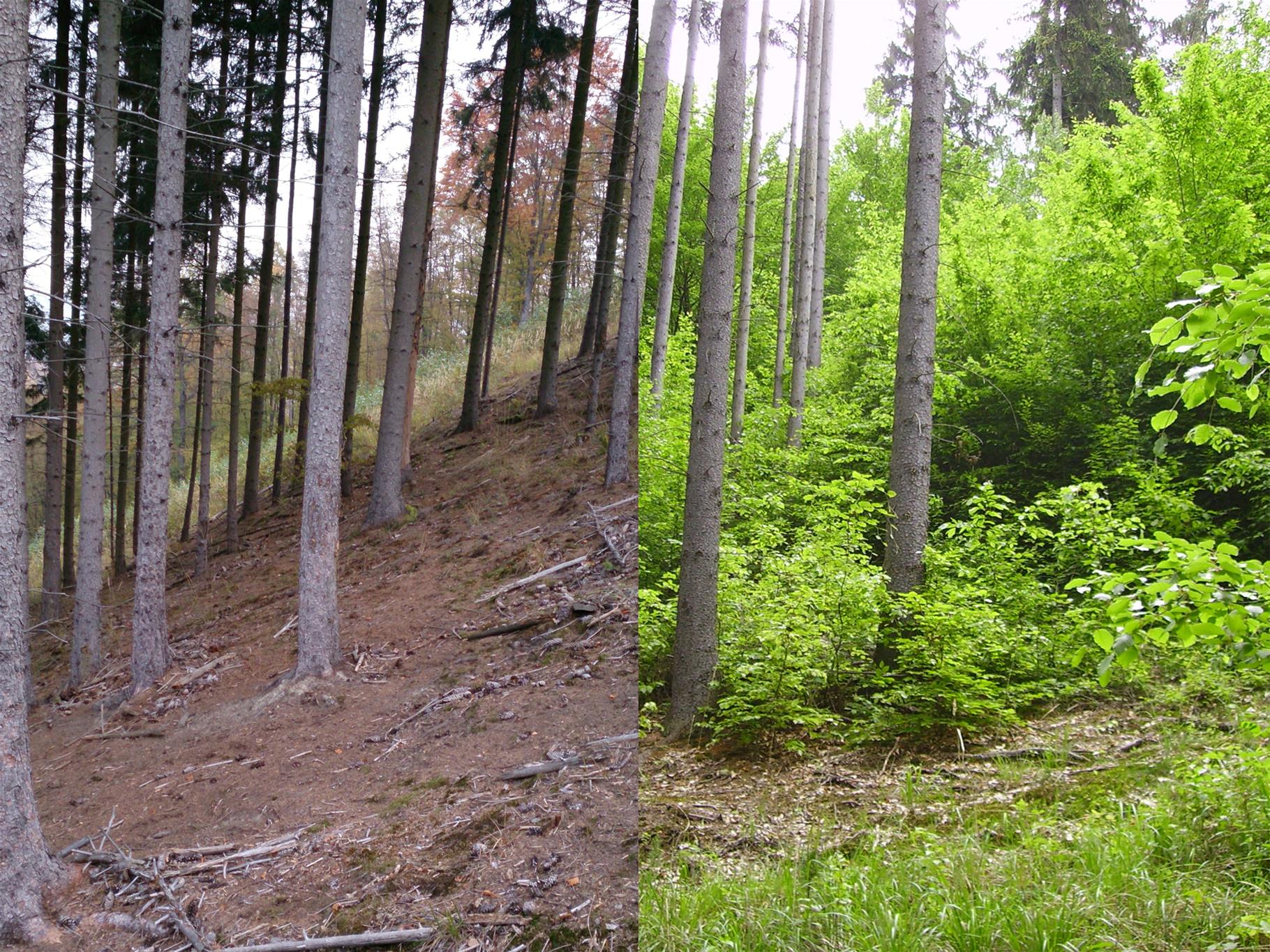Forest on the way to wilderness
Spruce and Douglas fir are not tree species that occur naturally in the Thayatal. The relatively dry climate is not suitable for them. Nevertheless, they were deliberately planted and used for forestry in more easily accessible places before the national park was established.If such forests were simply left to themselves, we would have to wait many decades or hope for assistance with storms, fire, bark beetles and other factors to bring dynamism to this monotonous system. Humans are helping the forest along in order for the wilderness to return more quickly.
In the Thayatal, this has been done over the course of the past few years through targeted rewilding measures. The spruces were successively removed and space created so that those tree and plant species that belong here naturally and without human influence can emerge again all by themselves. Almost 30% of the forest area has been converted into near-natural mixed deciduous forests since the establishment of the national park. The main tree species are oak, hornbeams and copper beeches, plus maple and lime in some valley locations. Occasional conifers include red pine, fir, yew and juniper.
Naturally grown forests are not only more beautiful to look at than forests planted in rank and file, but also offer a number of advantages. They are more resistant to climatic extremes, diseases and the mass propagation of insect pests. With their diverse herb and shrub layer and greater proportion of deadwood, they also provide significantly more food and habitat for a wide range of plants, fungi and animals. On the upside, damage to young trees caused by game is also reduced. That solves several problems at the same time.
Today, most of the rewilding measures in the Thayatal National Park have been completed. In many converted forest sections no one would think that not so long ago dense, dark spruce forests dominated there.





